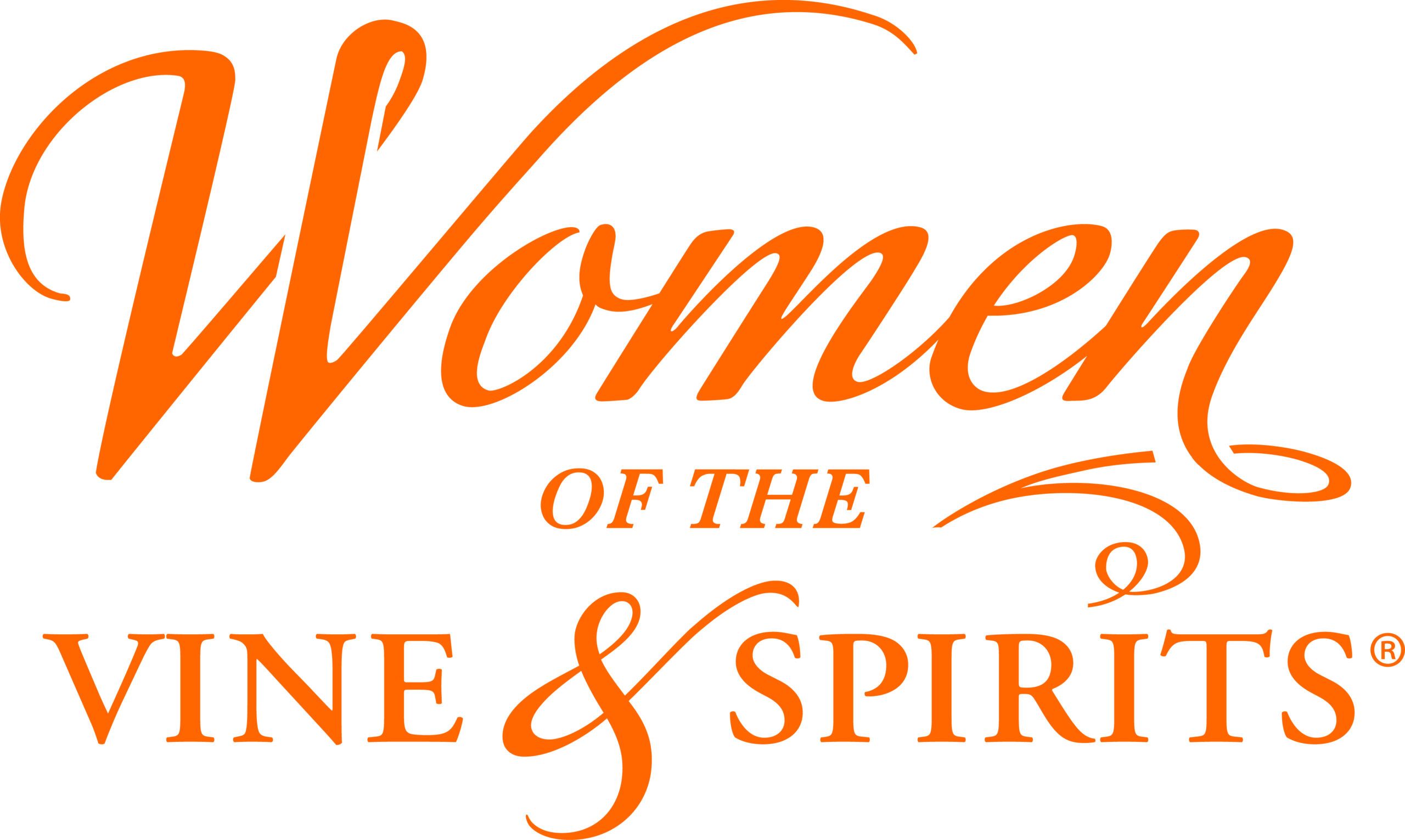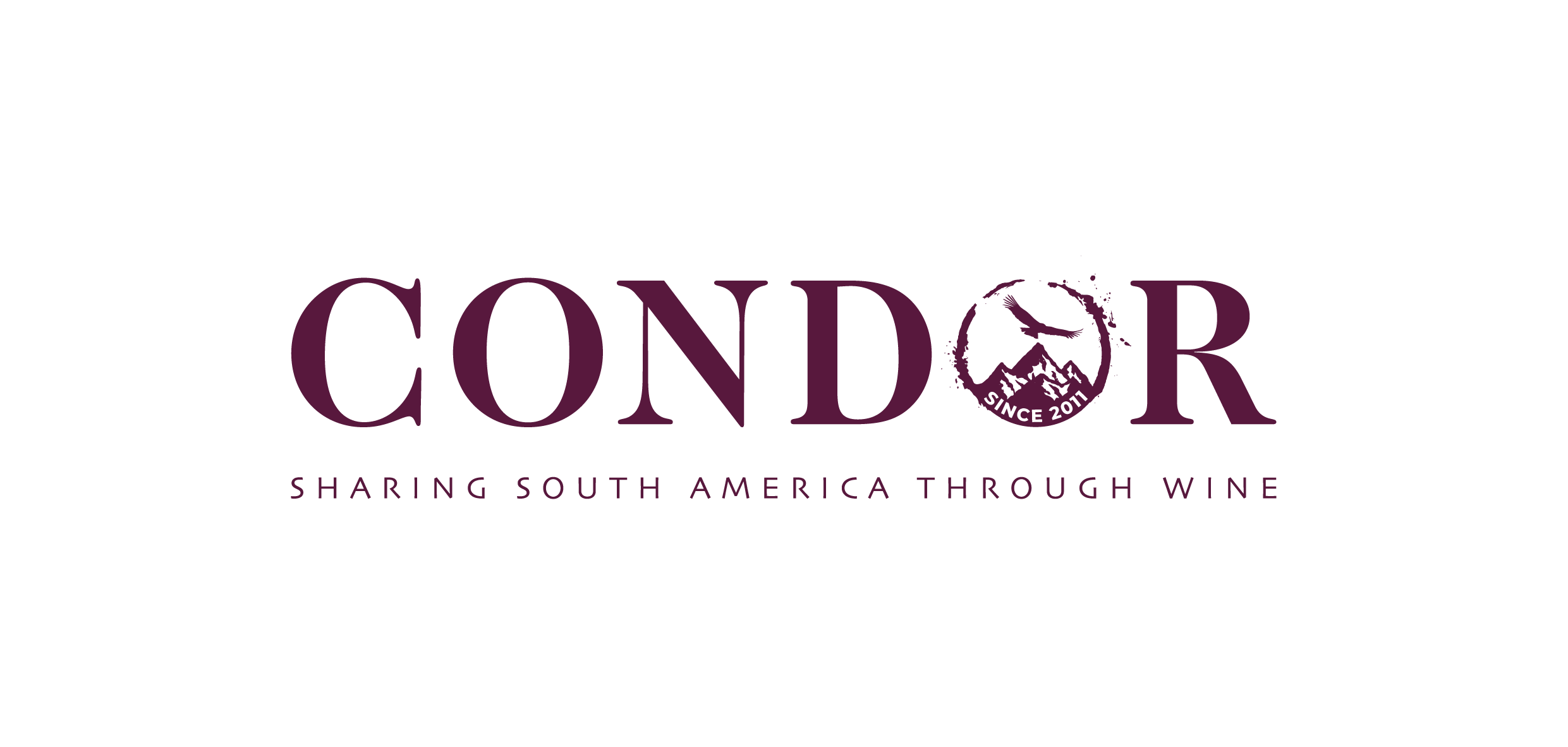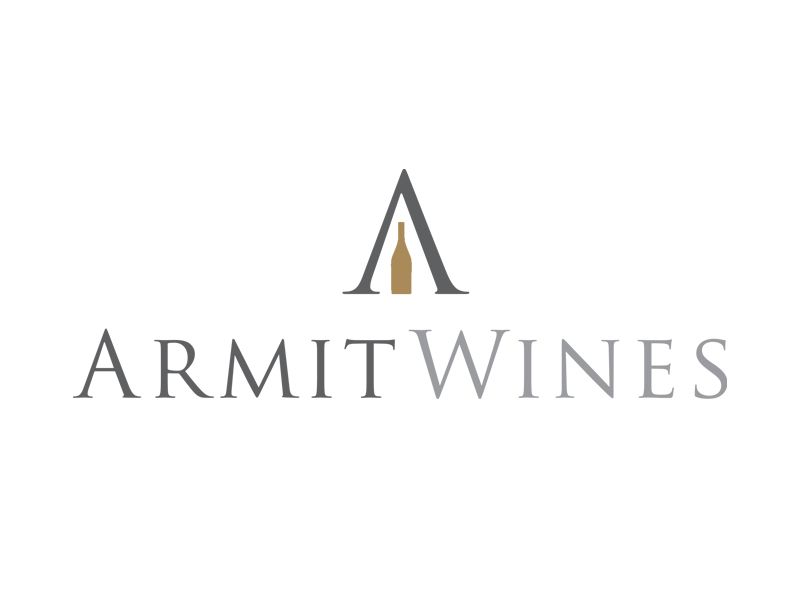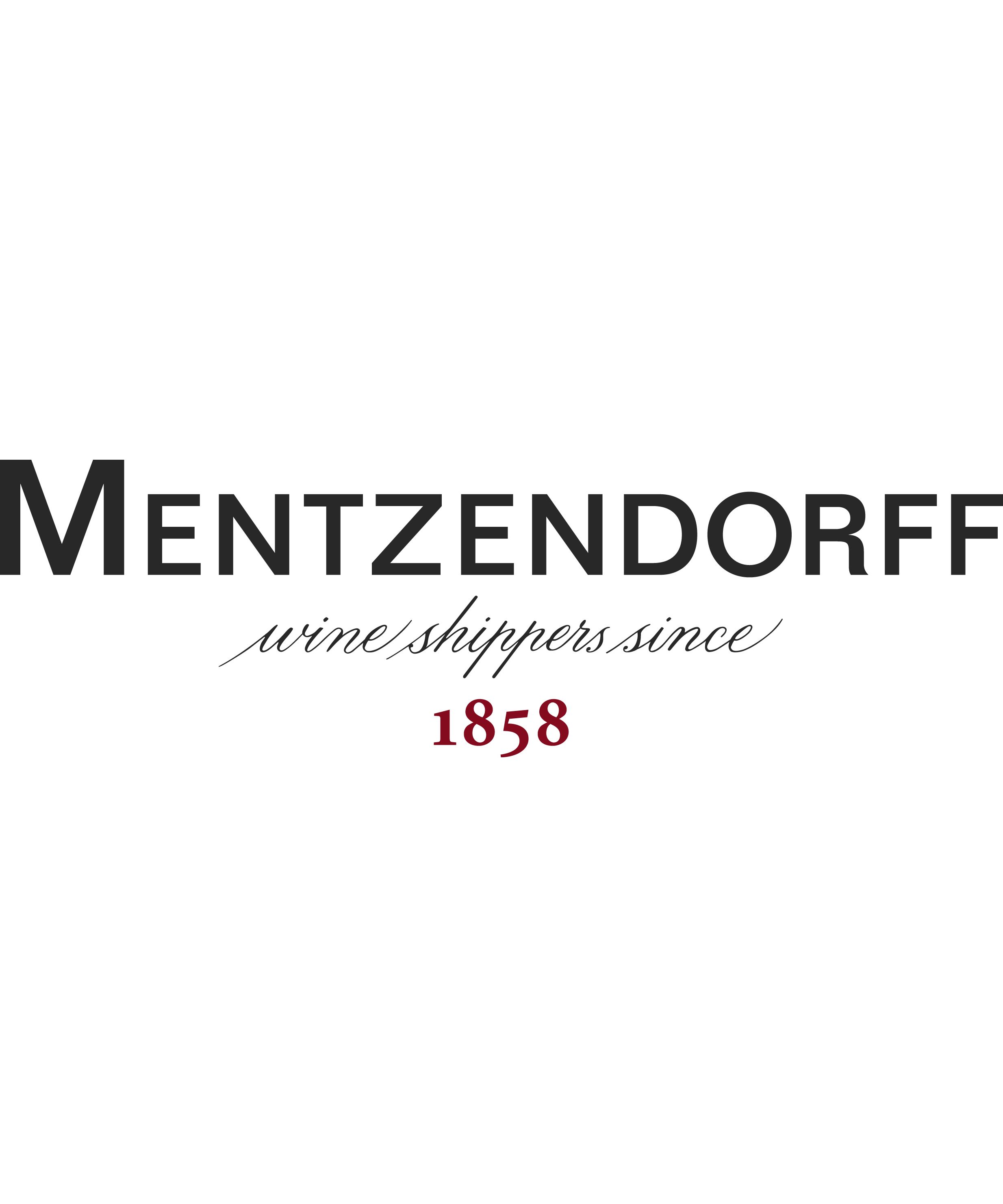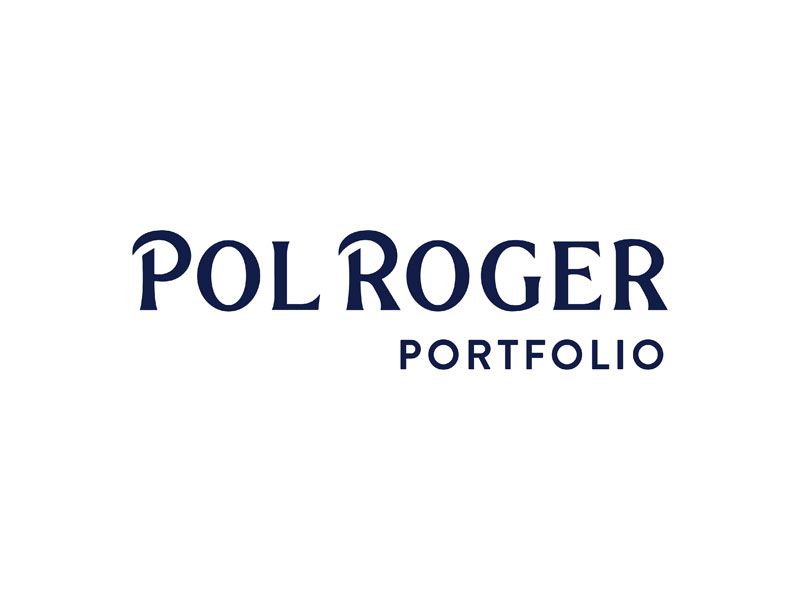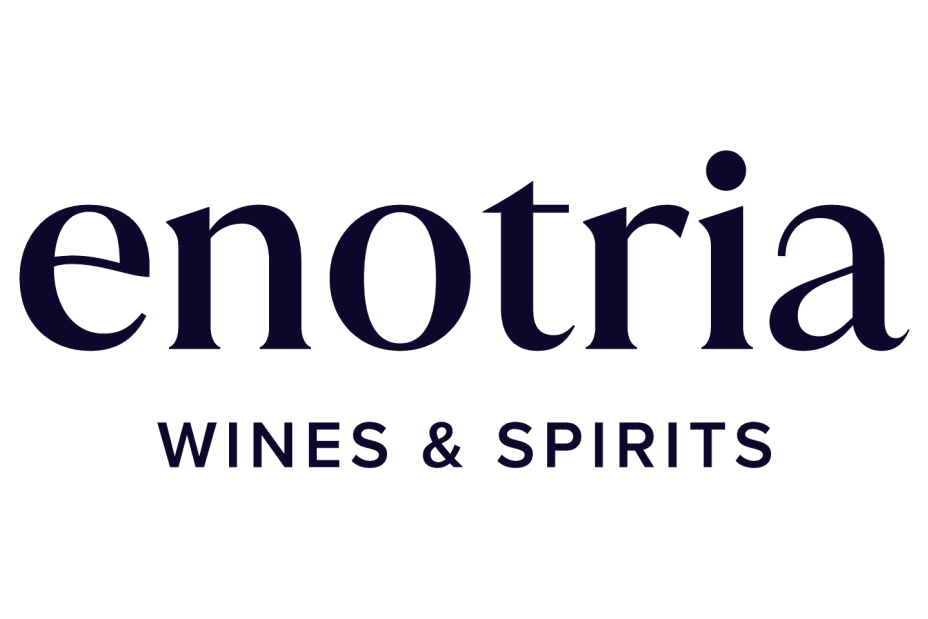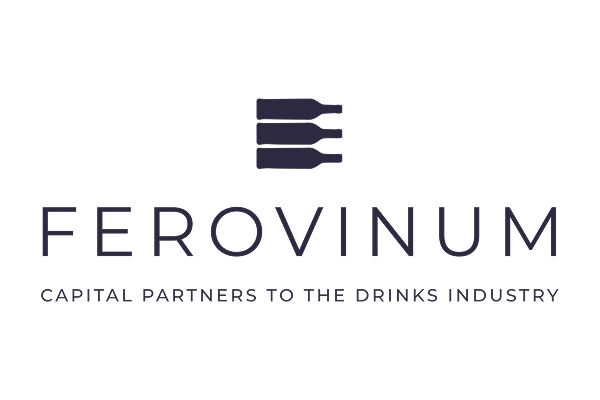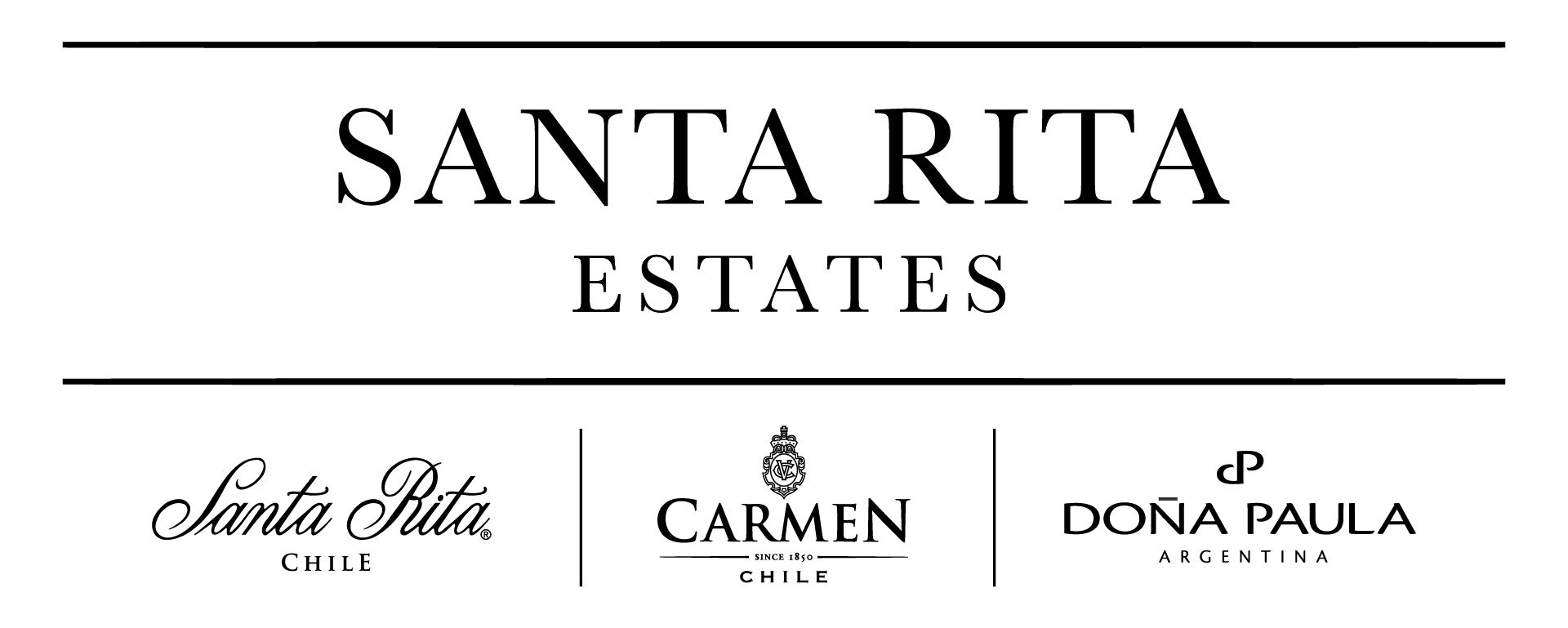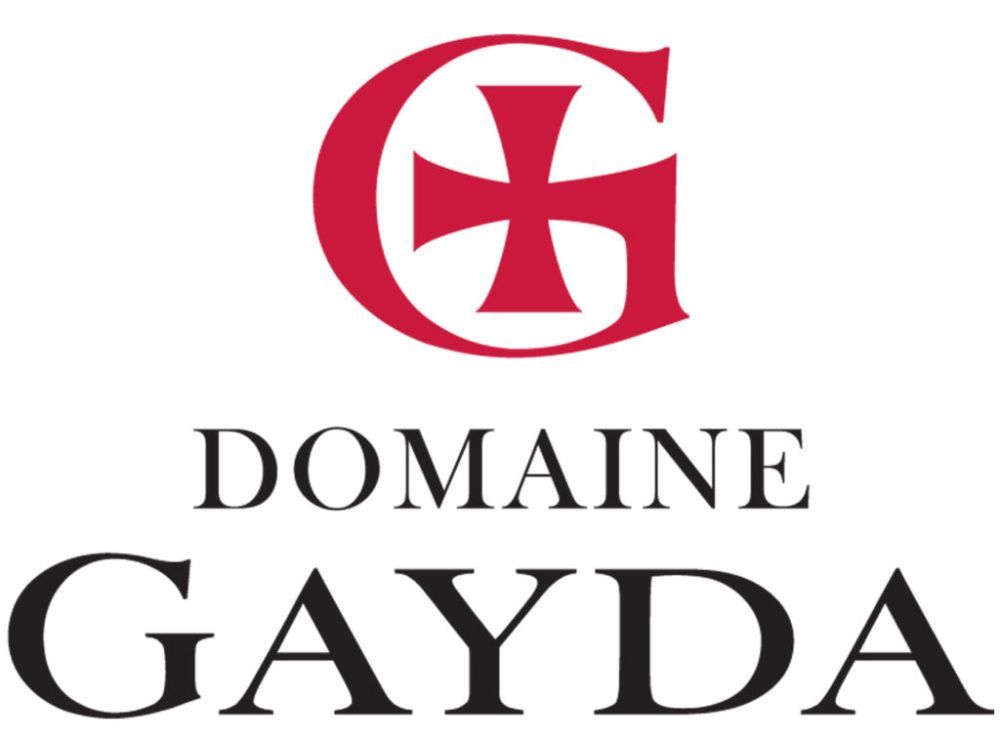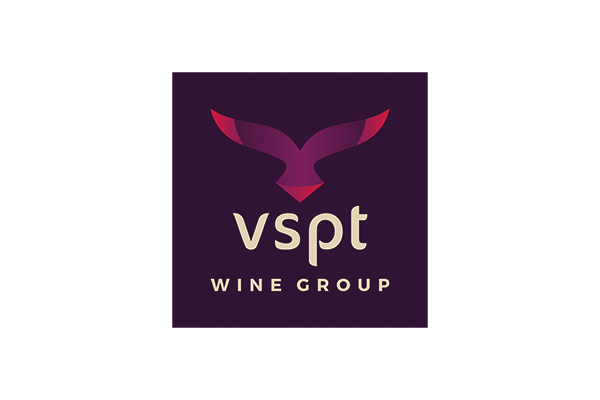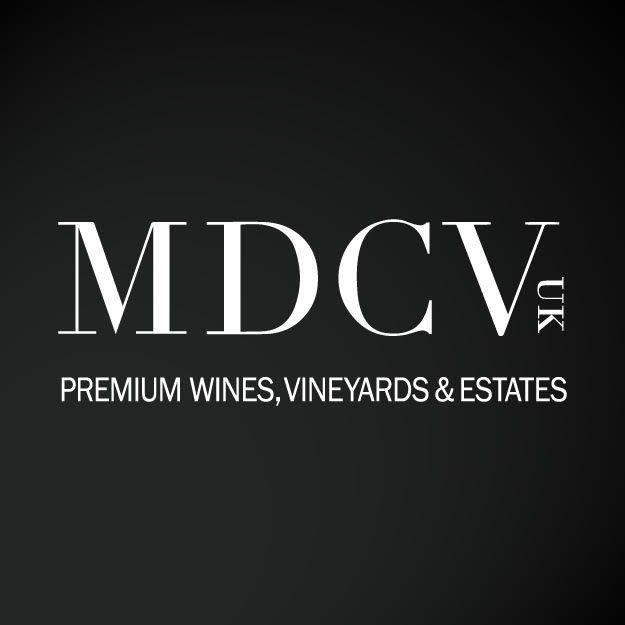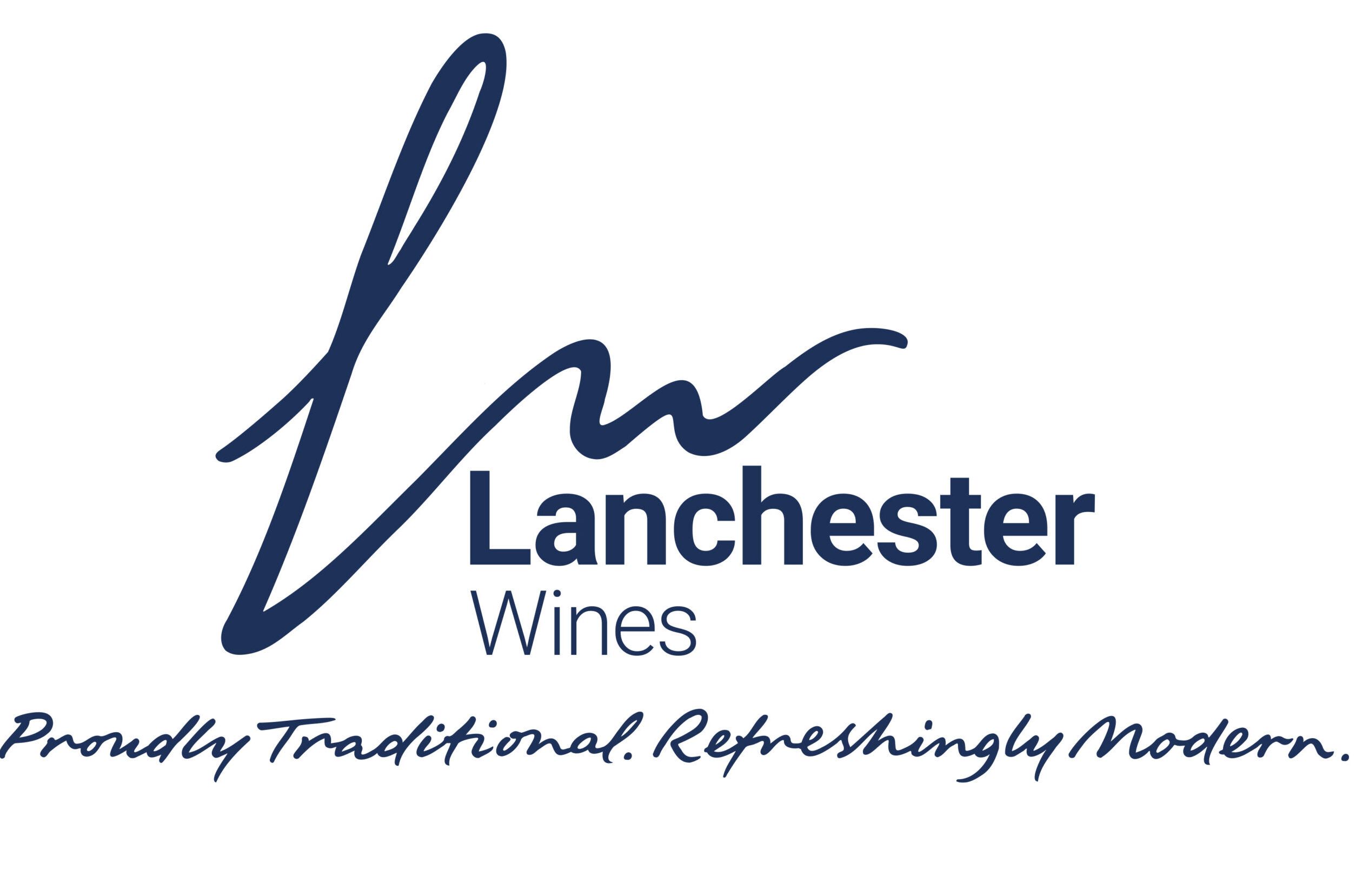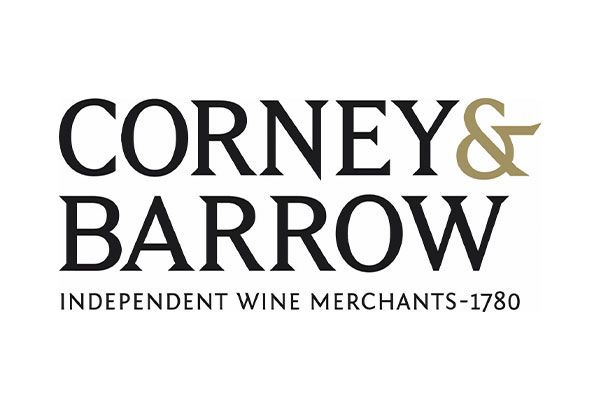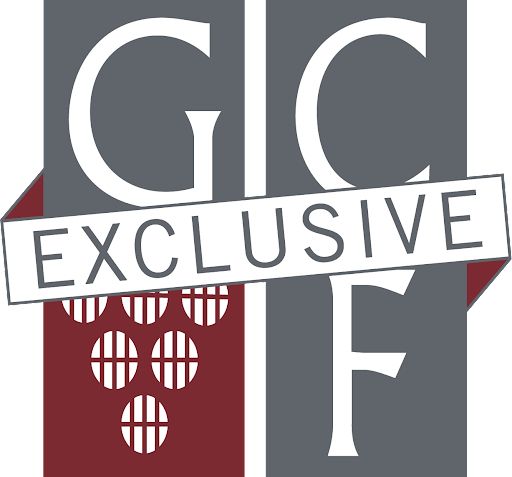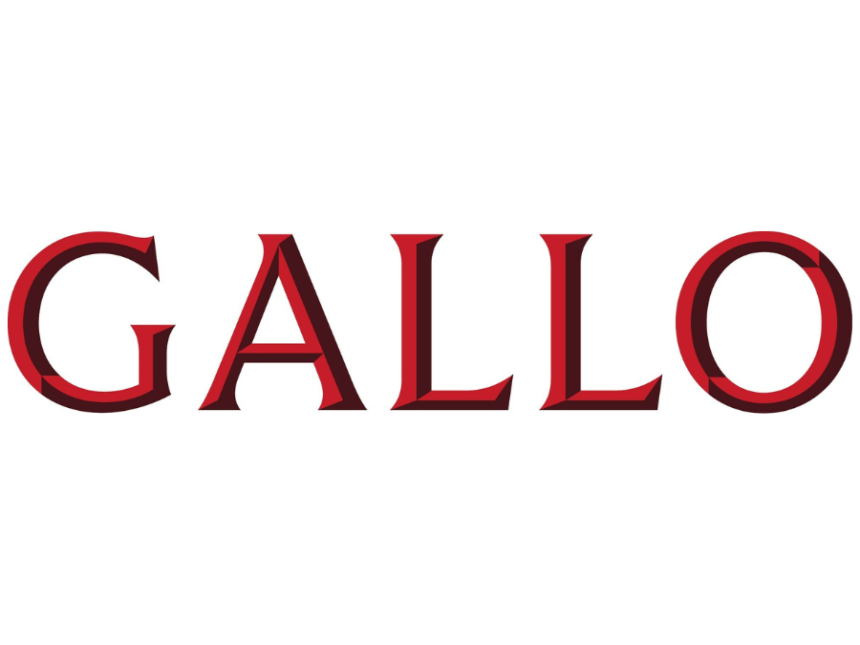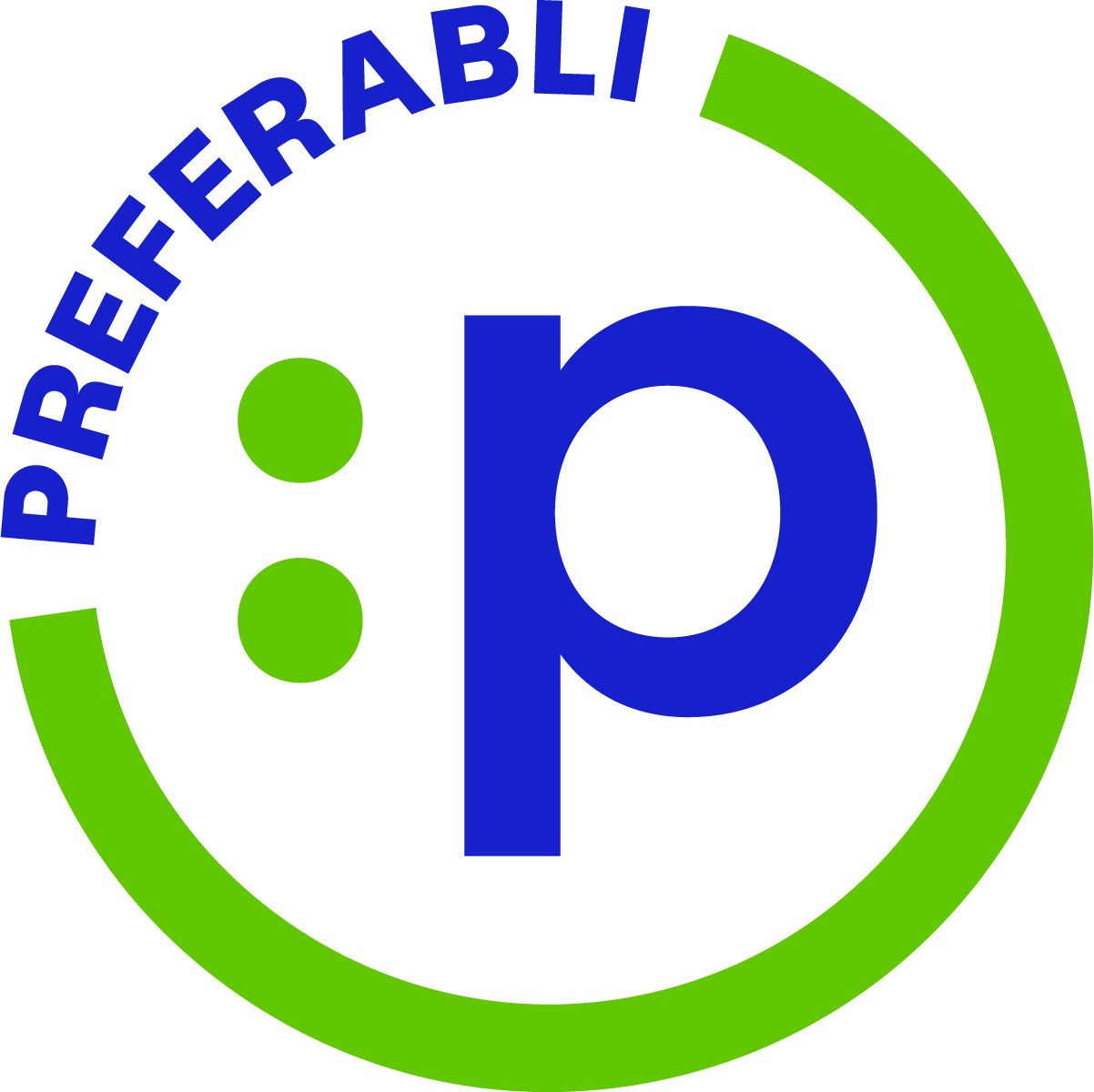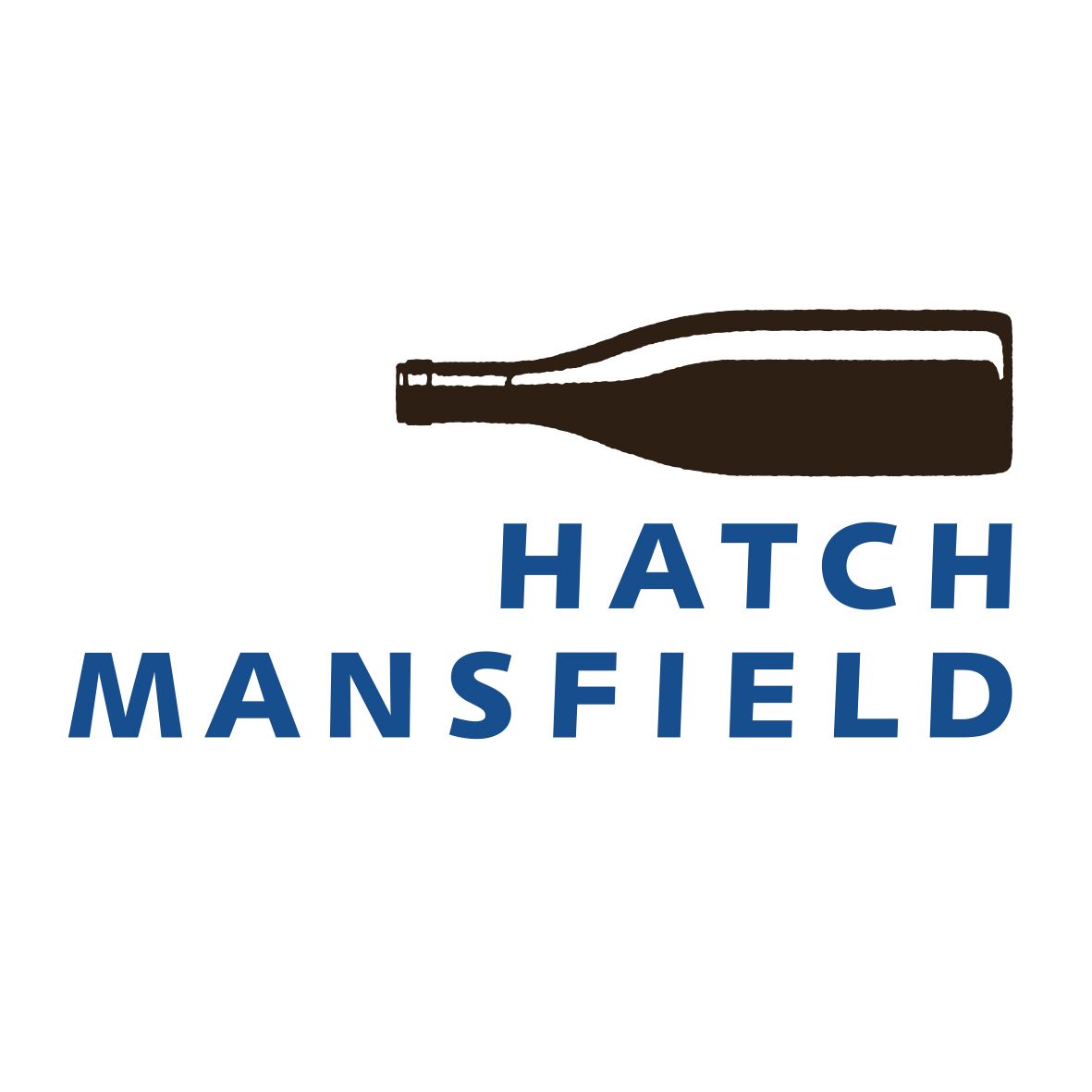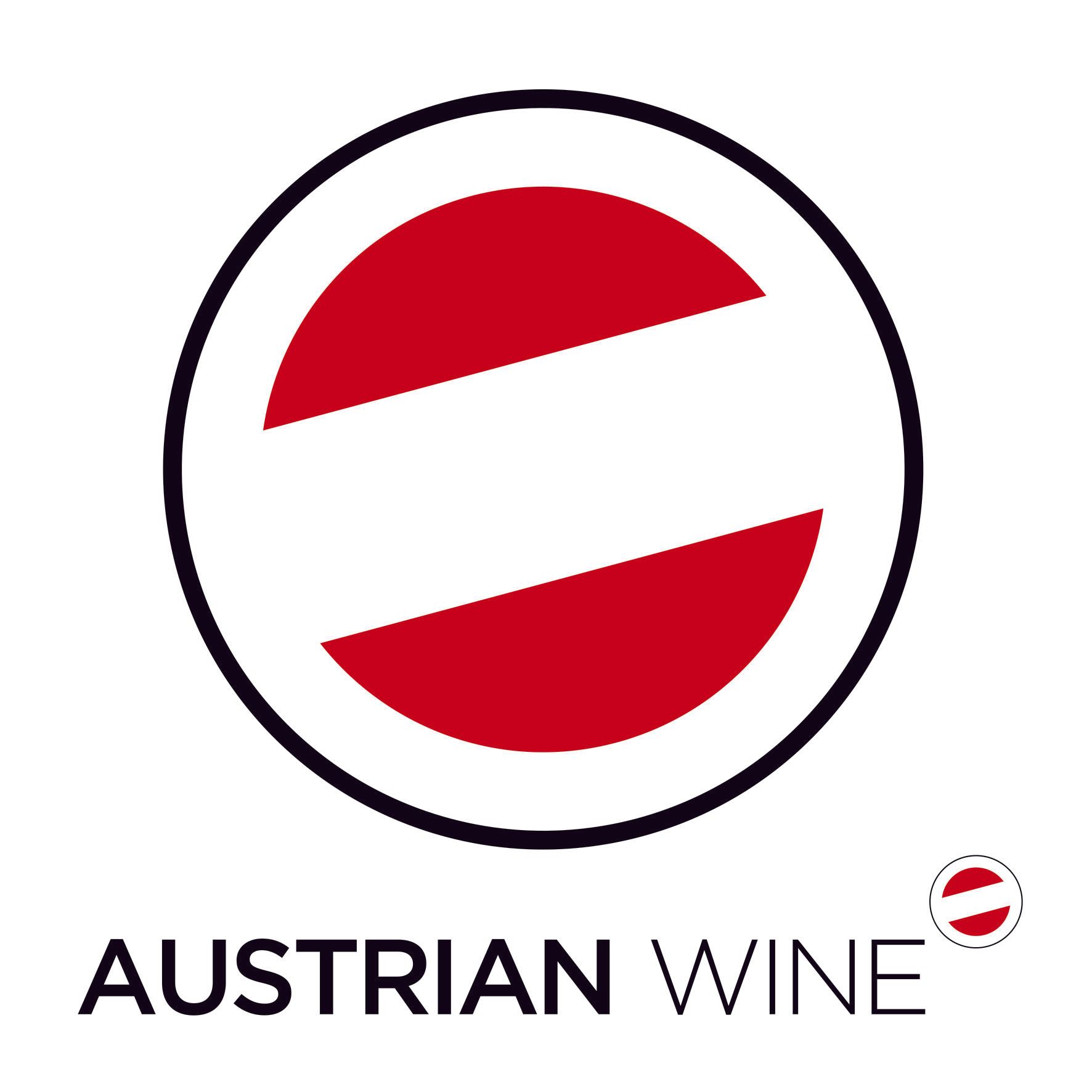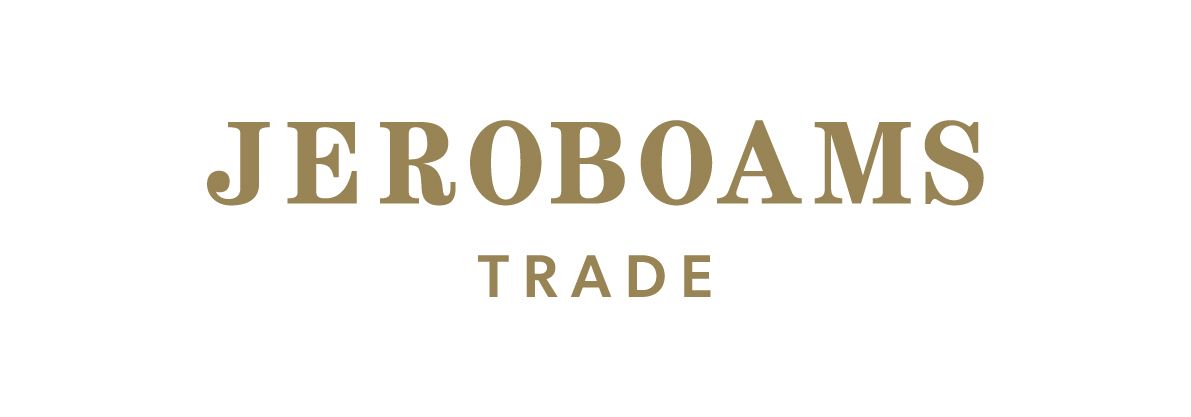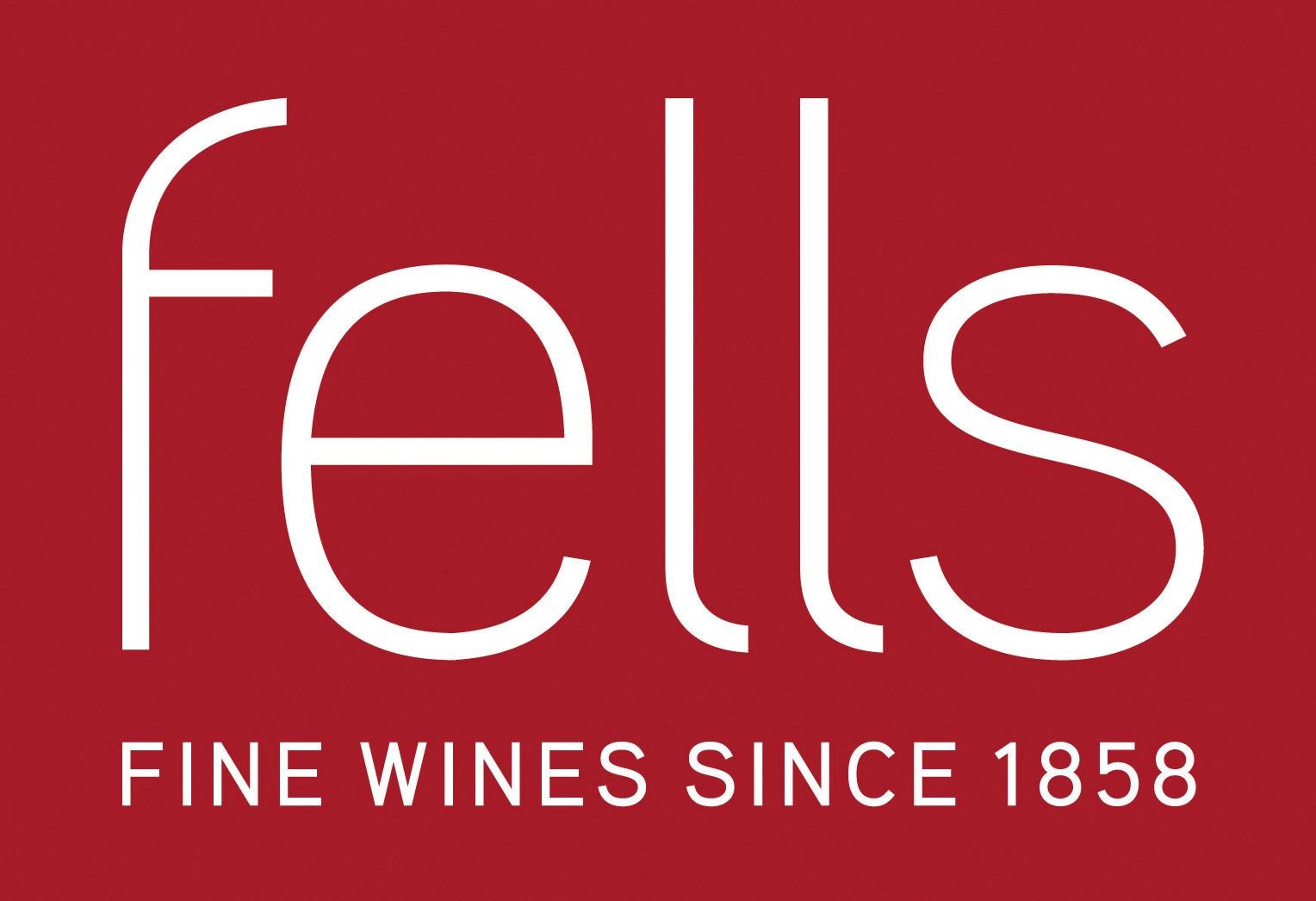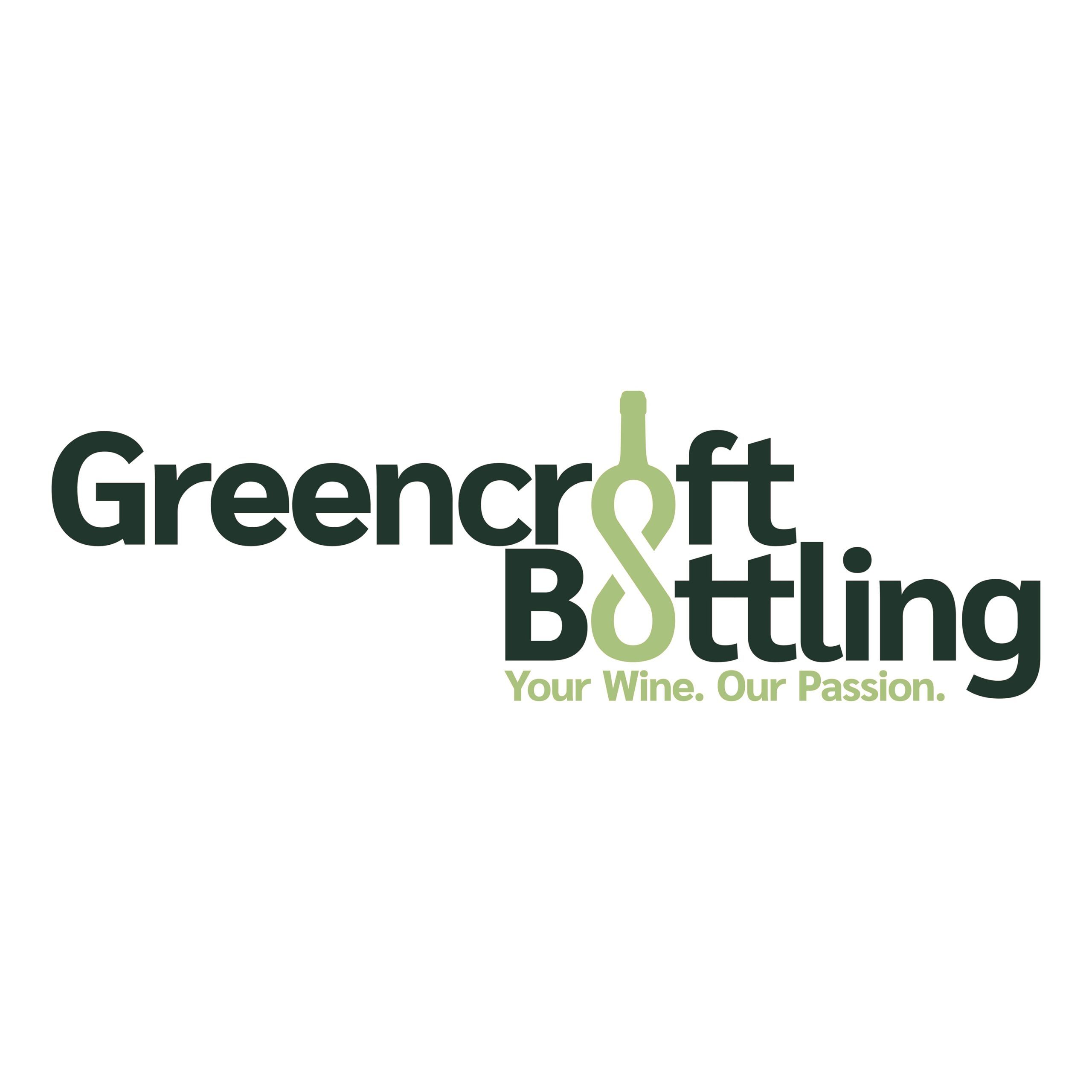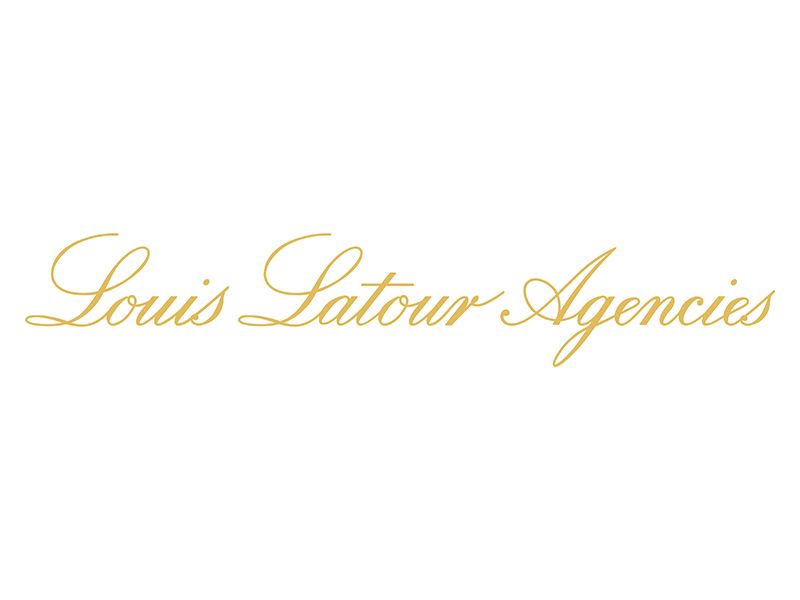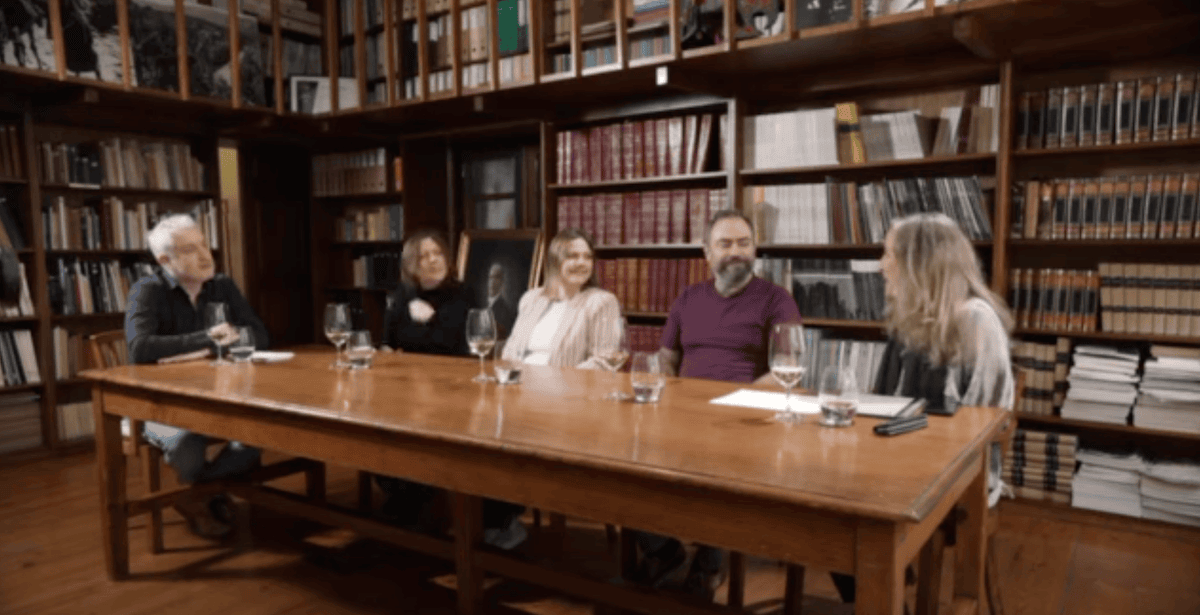Until you visit the Languedoc it is hard to imagine the size and diversity of the region. The Languedoc wines organisation, Conseil Interprofessionnel des Vins du Languedoc (CIVL) does an amazing job showcasing the array of producers and AOPs, organising a four-day tour with an assembled group of 35 wine journalists drawn from around the world.
Every morning a hundred different wines are laid out to blind taste at its headquarters in Narbonne and then tours wind their way through the varied landscapes to meet producers in various AOP regions and see their vineyards.
It’s a staggering statistic that five bottles of Languedoc appellation wine are sold every second – five in France and two worldwide. On the trip we learn why the wine from the Languedoc is so popular. It is a region of great wine heritage with a diversity of grape varieties and producers who are determined to make world-class wine.
Vibrant tradition and innovation

Jean-Claude Mas, UEVM President (speaking at L’Hospitalet Beach)
A sizzling ‘White Party’ on the beach with live jazz and imaginative late-night wine cocktails creates the sense of the stylish energy of the region and its vibrant Mediterranean lifestyle. Tradition is combined with innovation and we meet local wine producers – part of the Union des Enterprises Vinicoles Méridionales (UEVM) – and see much passion for organic and regenerative techniques.
In the heart of the La Clape appellation, the L’Hospitalet Beach resort is owned by the well-known Languedoc wine figure Gerard Bertrand. His daughter, Emma, believes beyond wine the region is also a lifestyle destination. “It has respect for nature, authenticity, audacity and a new vision of quiet luxury,” she explains.
Authenticity and history
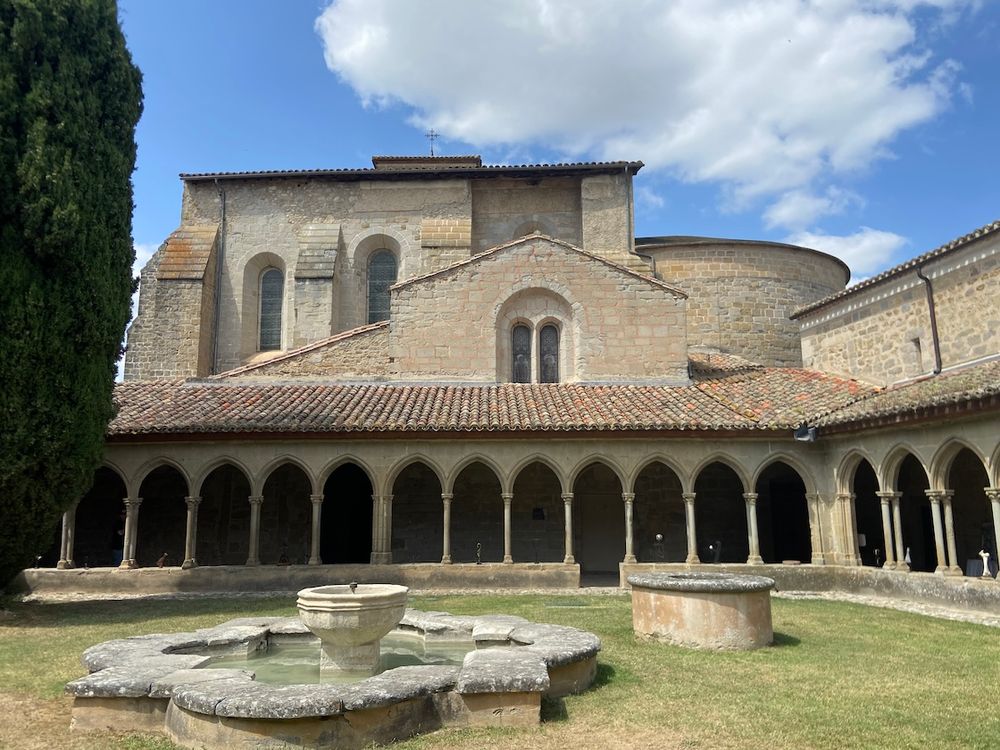
The home of fizz - the Abbey at Saint Hilaire, site of the first recorded example of sparkling wine
Authenticity is the word that comes to mind throughout the Languedoc but especially when we visit the Limoux region, tucked away in the gentle foothills of the Pyrenees. This corner of the Languedoc is home to a sparkling wine tradition that predates Champagne by more than a century, where the indigenous grape Mauzac has been used for centuries to craft wines with character and freshness.
Sparkling wine is usually associated with cool climates so it is somewhat surprising that it is here in southern France, and not in Champagne, that history documents the first creation of a wine with bubbles.
Historians of wine generally agree that Blanquette (meaning “little white”) is France’s oldest sparkling wine, with the first documented mention in 1531 by monks at the Abbey of Saint-Hilaire, near Limoux. These monks noticed that bottles of fermented wine, when stored during the winter, would sometimes re-ferment in spring, producing natural effervescence.
Local guides like to peddle the legend that a certain Dom Pérignon visited the Abbey, taking back to Champagne this method for producing sparkling wine.
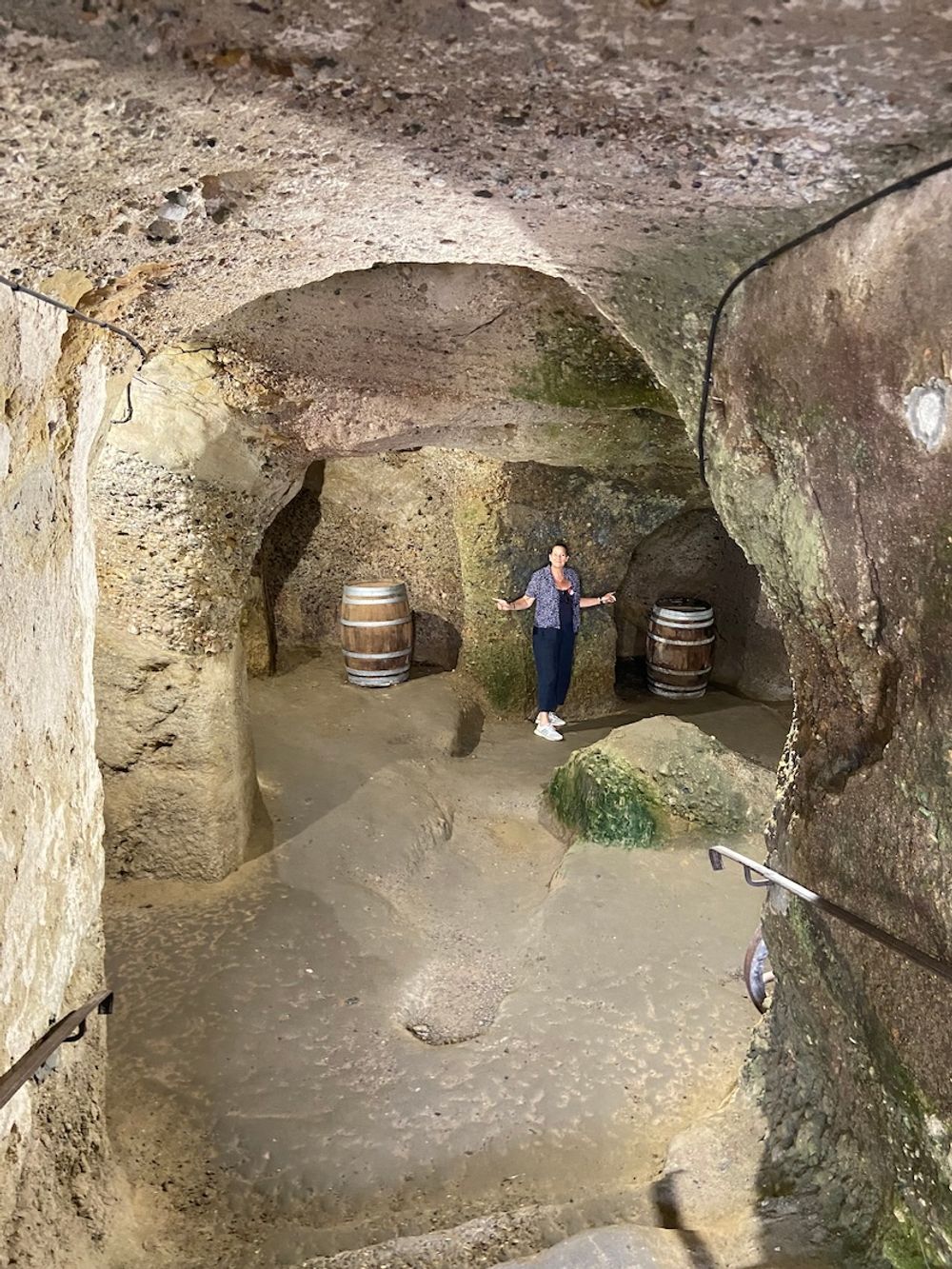
The corner of the cellar at Saint Hilaire where it all started
Blanquette de Limoux is primarily made from Mauzac a lesser-known late-ripening, high acidic grape variety which was once widespread in the southwest of France. In recent years, however, vineyards have been uprooted to give way to international grape varieties such as Chardonnay and Chenin to produce Crémant de Limoux. But now Mauzac is re-emerging as a quiet star in France’s sparkling wine revival.
Heritage heart and soul
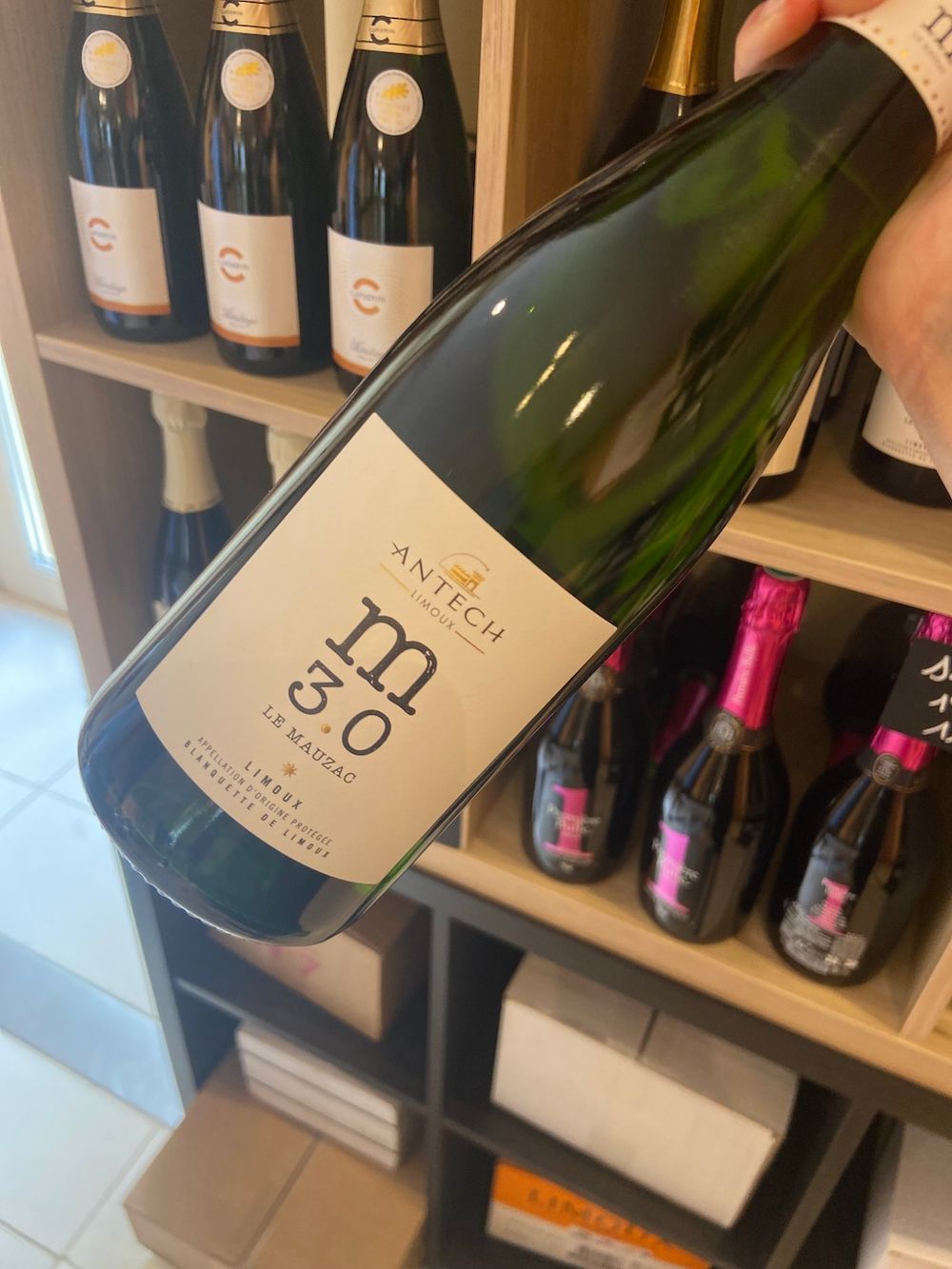
Among the producers carrying this heritage forward is Maison Antech (pronounced Antesh), a family-run estate and one of Limoux’s leading lights. What sets Antech apart is its unwavering commitment to Mauzac, the traditional white grape of Limoux, and its passion for wines that speak of place. While many producers are shifting toward international varieties like Chardonnay, Antech continues to champion Mauzac – indeed 100% Mauzac wines are the heart and soul of its best cuvées.
By AOP regulation, Blanquette de Limoux must be made with at least 90% Mauzac, with the remainder being Chardonnay and/or Chenin Blanc. It is produced using the traditional method (méthode traditionnelle) – the same as champagne – which involves a secondary fermentation in the bottle.
This is not to be confused with Blanquette Méthode Ancestrale, which is made solely from Mauzac using a single, interrupted fermentation, resulting in a sweeter, lower-alcohol wine. Crémant is made predominately from Chardonnay, but it is Blanquette de Limoux Brut 100% Mauzac which remains a flagship for elegant, dry, age-worthy sparkling wine.
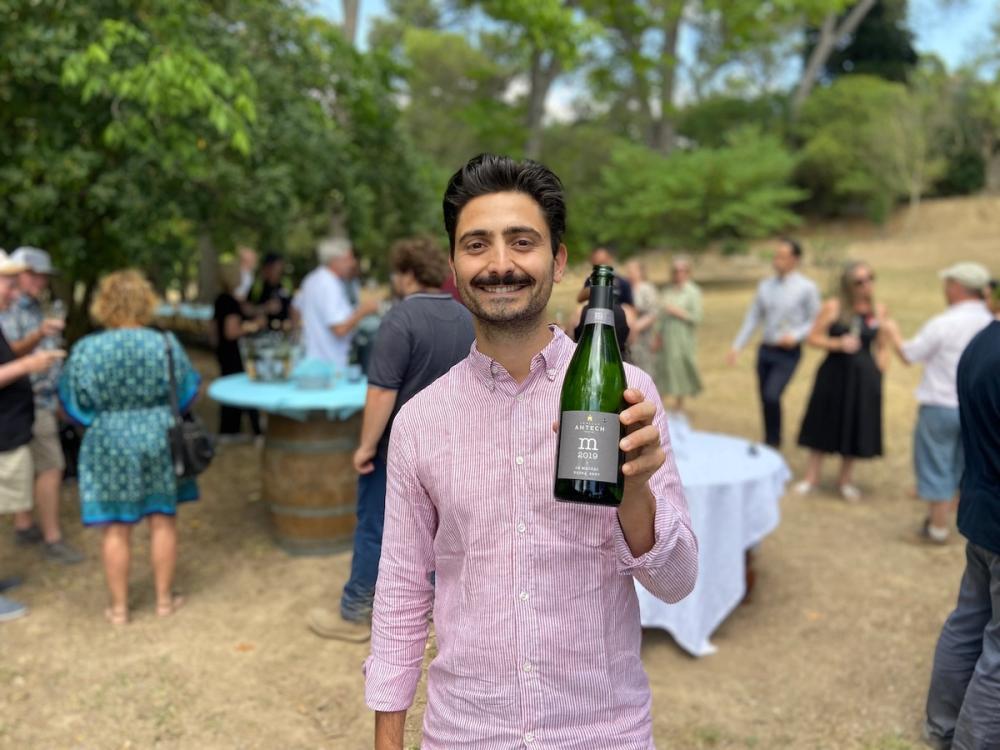
Baptiste Gazeau, Maison Antech winemaker
Antech’s ‘Terroir‘ range of 100% Mauzac sparkling wines, which were first created during lockdown, include the m Brut Nature Vintage and m Reserve Extra Brut Vintage. With citrus fruits and apples, they have a lively mouth and harmonious with a mineral finish and crispness. The Extra Brut has orchard fruits associated with notes of white flowers, fresh, round and complex with aromas of pear and apple crisp.
2019 Vintage Extra Brut (100% Mauzac) has subtle aromas of quince, candied fruits and ageing. The mouth is ample and complex, delicate with a surprising freshness. With 70 months on the lees there is a freshness of citrus fruit, fresh apple and notes of fennel.
Antech’s m 3.0 The Mauzac Brut Nature (100% Mauzac) with zero dosage has a full mellow body and a long finish of green apples that is the hallmark of Mauzac.
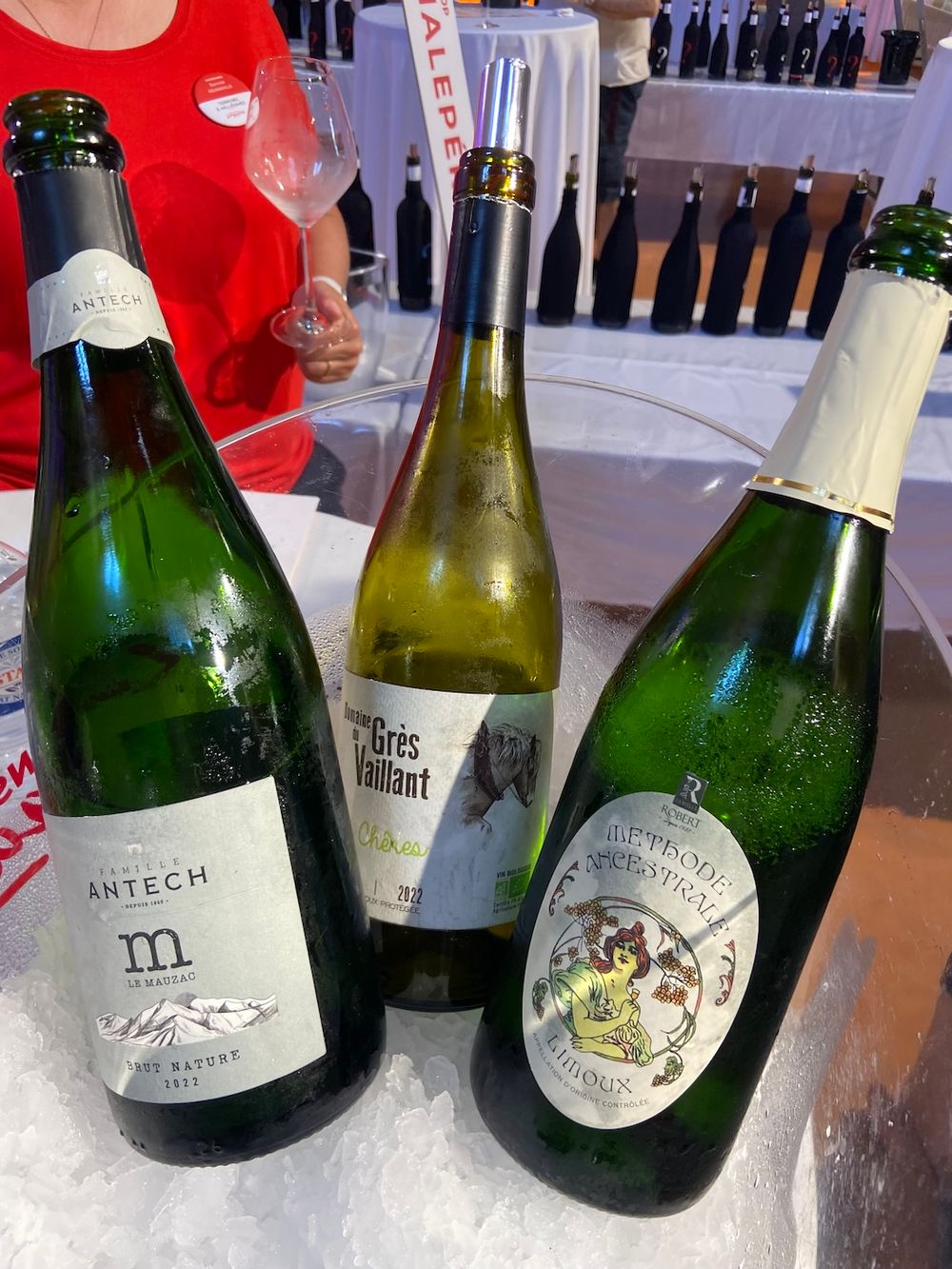
We are treated to lunch in Limoux at Château Martinolles (owned by another notable Languedoc wine maker, Jean-Claude Mas) with a range of Blanquette and Crémant wines. Domaine de Martinolles, ‘Le Berceau’, Blanquette de Limoux NV is also 100% Mauzac. It is light yellow with aromas and flavours of pears, yellow apples and citrus with generous, persistent bubbles. Le Berceau translates as “the cradle” in reference to the birthplace of sparkling wine. J. Laurens, perhaps known more for its crémant also produces a 100% Mauzac, called L’Auriol.
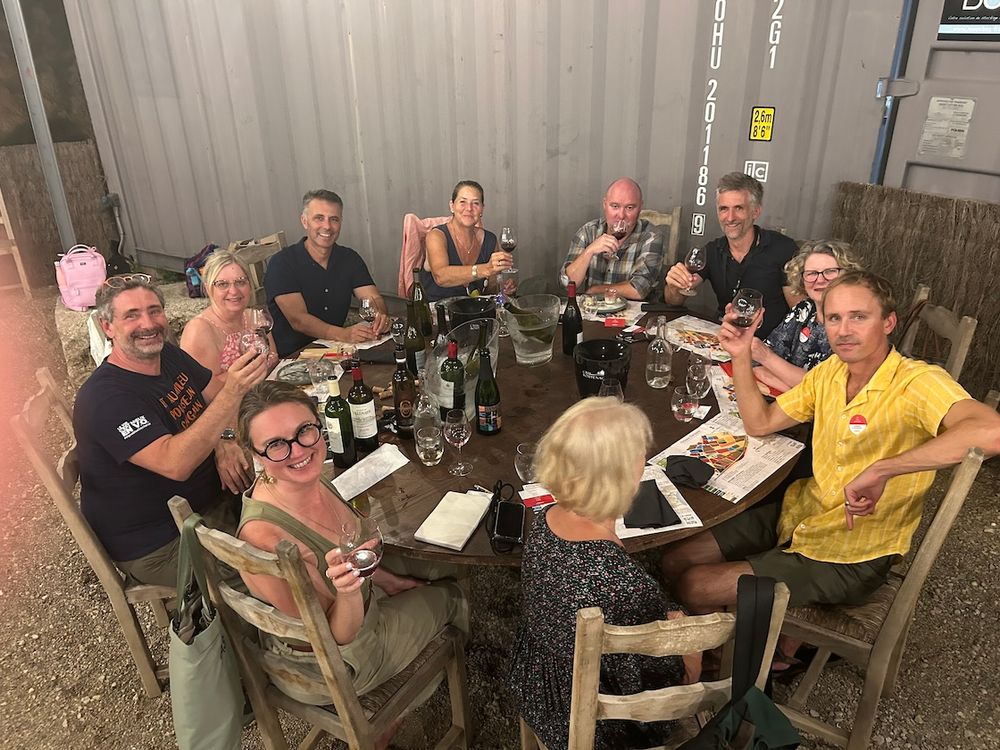
Dinner with producers and two Languedoc presidents: Pierre Bories (president CIVL) and Etienne Bescancenot (chair Boutenac AOP) at Château Ollieux Romanis, Boutenac
The president of the CIVL Pierre Bories (whom we first meet hosting dinner in the La Touketa restaurant in his Château Ollieux Romanis elsewhere in the Boutenac area of Corbières to meet local producers) has also recently acquired award-winning white wine producer Château Rives-Blanques. The 2445 Brut Nature, 100% Mauzac (named after the height of the towering Pic de Rives-Blanques overlooking the vines) is delightfully fresh and light. Bories engages us with charming hospitality.
Still wines made from Mauzac
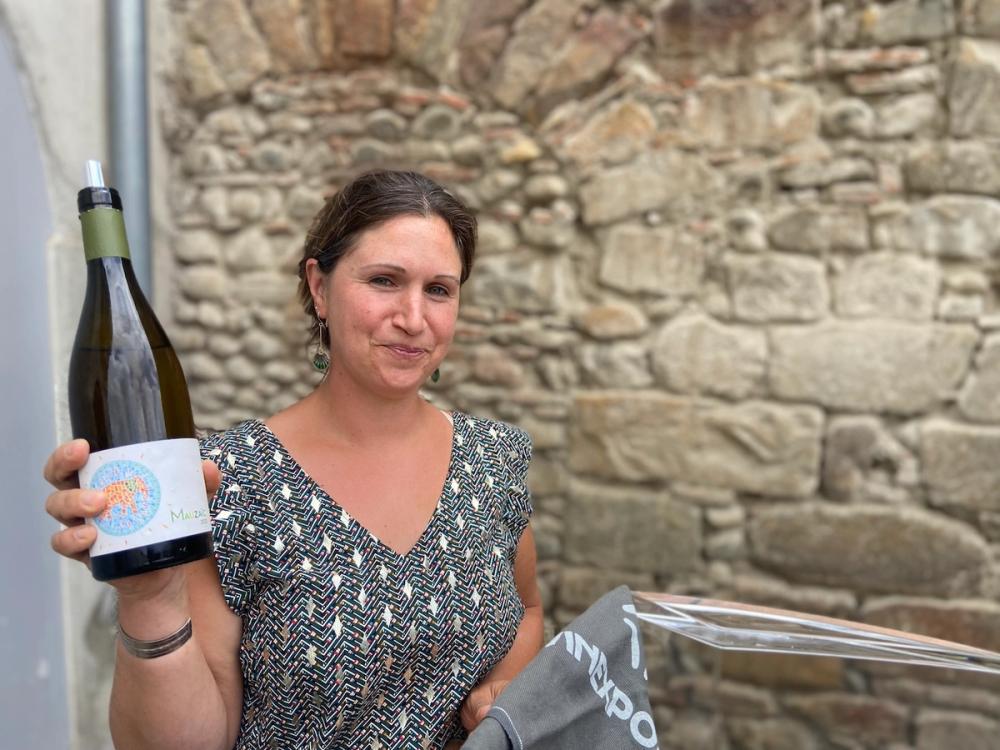
Camille Fort of Domaine de Mouscaillo producing ‘Mauziac’ 100% Mauzac still white wine
100% Mauzac still white wines exist too, but these remain relatively rare and often only available for the French domestic market, although a good example from Château Rives-Blanques called Occitania Mauzac Blanc is imported into the UK by Tanners and has wonderful ageing potential. It has also started producing Conservatòri, imported by Woodwinters.
At a tasting in Limoux, we discover Domaine du Grès Vaillant (100% Mauzac) which is crisp and punchy and is made alongside its 100% Mauzac Blanquette. The Mauziac from Domaine de Mouscaillo is another Mauzac still wine which the estate is making to try and preserve the variety, with the use of up to 80 different clones.
Several other estates produce excellent Mauzac-based wines but only using the required 90% AOP minimum. Domaine Delmas is a small organic estate focused on traditional winemaking. One of the largest and oldest cooperatives in Limoux is Sieur d’Arques named after the monk often credited with ‘inventing’ Blanquette.
Still Mauzac is a sommelier’s dream as it works particularly well with vegetable dishes, often ones that are difficult to pair, and is one of those niche varieties that can create a point of difference on a wine list.
Best value sparkling with regional identity
Blanquette de Limoux has been described as one of the best value sparkling wines in France and it was delightful to find the distinct regional identity of 100% Mauzac Blanquette de Limoux sparkling as a great alternative to Champagne. At this time when the wine world continues to embrace authenticity and regional diversity, Mauzac is certainly poised for a quiet renaissance. A perfect discovery in the Languedoc for those seeking wines with character, history, and a taste of tradition.

